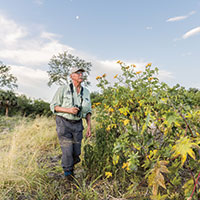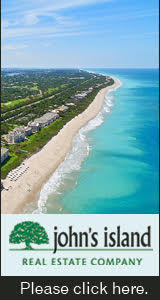 ‘Visionary’ plans taking flight for Windsor’s North Village to become a paradise for local and migrating birds
‘Visionary’ plans taking flight for Windsor’s North Village to become a paradise for local and migrating birds
STORY BY JON PINE (Week of January 9, 2025)
Photo: John Fitzpatrick, director emeritus of the Cornell Lab of Ornithology.
After Windsor founder Galen Weston passed away in 2021, his daughter Alannah Weston turned her attention to her father’s legacy. A longtime advocate of environmental sustainability, she took a fresh look at the plans for North Village, the New Urbanist community’s final phase of development.
Since the 47-acre parcel borders the Pelican Island Wildlife Refuge, “Alannah and the rest of the family looked at the plans and decided to literally go back to the drawing board,” said Jane Smalley, Windsor’s director of marketing.
Working for over a year with architect and urban planner Andrés Duany, the original designer of Windsor, and John Fitzpatrick, a world-renowned ornithologist, the Westons have come up with a plan to make North Village a haven for both local and migrating birds.
“Windsor is launching a visionary far-sighted project with significant alterations to the landscape,” said Fitzpatrick, director emeritus of the Cornell Lab of Ornithology. “The goal is to make it ecologically attractive and effective as a natural habitat. This follows a trend that is growing around the country but is especially important and super exciting to see in Florida.”
At first, Fitzpatrick was invited to some planning meetings for North Village, and then it was decided that he should do a preliminary bird study to document which birds were already here or were passing through.
Fitzpatrick scheduled 10 mornings during last winter and spring to document the birds he spotted, along with their behaviors and habits.
“We have a good baseline for what is there before ground was broken,” Fitzpatrick said. The site is an old orange grove and had been used to store soil and other supplies, overgrown with cabbage palms and Brazilian pepper trees, which are not native, he said. “So, not particularly ecologically interesting.”
But by the end of his 10 three-hour visits, Fitzpatrick had recorded 81 species of birds. After five years or so, Windsor can compare this with current data to see if their plans for an avian oasis panned out.
Among the recommendations he made was to allow the shores of the lake and estuary to grow with natural vegetation, rather than try to bring manicured grass right to the water. “That will guarantee a larger diversity of birds,” he said. The hope is to attract waterfowl like herons, ducks, egrets, ibises, and other water birds he said.
Next, Fitzpatrick recommended getting rid of all the Brazilian pepper trees, which are not native to Florida. Replacing them with native trees and plants will be a challenge, but Windsor is keen to meet that challenge, he said.
Another recommendation is to bring in some nesting boxes for birds such as wood ducks, flycatchers, screech owls, or even Carolina wrens and purple martins, Fitzpatrick added.
In addition to serving as a professor of Ecology and Evolutionary Biology at Cornell University, Fitzpatrick was executive director of the Archbold Biological Station near Lake Placid from 1988 to 1995. Before that he was curator of birds and chairman of the Department of Zoology at the Field Museum in Chicago. He is a fellow and past president of the American Ornithologists Union.
It turns out Fitzpatrick and his wife, Molly, had been coming to Vero Beach since the 1980s to visit Molly’s parents. They now own the Central Beach townhouse where Molly’s parents lived.
Fitzpatrick will conduct another bird study on Windsor’s golf course, which recently was certified as an Audubon Sanctuary, Smalley said.



